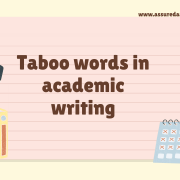Computer Science is the study of computer software and systems involving computation and computability. Computer Science employs the principle of mathematics and engineering (Klopfer & Thompson. 2020). Computer Science fields include the following topics that we are going to discuss. These are; Regular Expressions, Basic Text Processing, Edit Distance, Language Modeling, Naïve Bayes, and Text Classification Evaluation.
Starting with Regular Expressions, Regular Expressions, which is also called rational expression, involves the use of characters that represent specific patterns. The patterns are used for the searching algorithm or the replace option in algorithms. These characters are things like; *, /, + and [], and many others. Regular expressions or usually used to check inputs and grant permission for acceptable inputs. Many scripting programs use familiar words in checking dates, email addresses, and research addresses such as URLs. The regular expressions are easy to read and understand for humans (Flores, Figueroa, & Pezoa. 2019). For the machines, they are readily convertible to simple rules used in executing commands on the computer. Regular expressions are handy, although they have their limitations too. Some of the regulations are that one cannot search for words and replace them with the same character size. A regular expression is normally replaced by something we call grammar, which is more powerful and effective than regular expression.
The next topic is Basic Text Processing. Necessary Text Processing is the creation and development of electronic wordings. All computer commands such as shut down, restart, and update are created and modified through Basic Text Processing. Basic Text Processing is mainly all about the creation, changing, searching, and replacement of content. Basic Text Processing is all about the design of text electrically. Text is composed of all the alphanumeric characters in the keyboard, hence making the Basic Text Processing more of a keyboard way of execution than the mouse way of drag and drop, or creating text through mice such as copy and paste. Basic Text Processing is a more open working and does not follow any specific method or formulas. It is operated in the presentation worksheet and not in the application layer. Basic text processing is involved in the transformation of information automatically. Text processing can be confused with word processing, but the difference is that Basic Text Processing is that Text processing works with text processing services. In contrast, word processing uses a word processing service. An example of areas that use Basic Text Processing is publishing articles, magazines, and books.
The third topic is Edit Distance. Edit Distance is a process of weighing the difference between two strings (for example, two words) in terms of how the number of operations is needed to transform one a string to another (Lin & Luo. 2020). Edit distance is used in spelling correction, where words from the dictionary are used to make corrections of any spelling mistakes. Edit distance also involves other commands such as removing, inserting, and replacing characters in a string. There are various types of edit distance. One is the Levenshtein distance that is used for deleting, adding, and substituting symbols. The other edit distance is the Longest common subsequence that accepts and is used for inserting and deleting only with no covering. The third type of edit distance is Hamming distance used for substituting only hence applicable to words of the same length. Damerau-Levenshtein is a distance that allows on to delete, insert, substitute, and transposition characters. Jaro edit distance is another type of space that allows the transposition of characters alone. That makes insertion, deletion, substitution, and major transposition commands in edit distance.
Forth is the Language Modeling. Language Modeling is a topic in Computer Science that deals with the diagrammatical and wording of computer language in developing the structure and model of systems following various steps and guidelines. Language modeling mainly uses probability techniques that pick the frequent alternatives. These are machine translation, speech identification, handwriting recognition and interpretation, and information recapturing (Fourkioti, Symeonidis, & Arampatzis 2019). Language modeling usually uses a Neural network that links and shows the flow of probability in wording. Some of the likelihood expressed by language modeling are Markov chains and Mikolov’s words. Language modeling tracks typically show the probability through which the terms will follow one another, providing a sequence of words. Language modeling helps one differentiate a sentence, a phrase, and add up to make a paragraph. Language modeling is also used in retrieving data from queries according to their probability in the document.
The other topic is Naïve Bayes. Naïve Bayes is a machine learning technic that uses probability graphical designs (Lin & Luo. 2020). This is where one draws a graph showing how various variables are related to one another and mainly identifies the dependent and independent arguments to find the data’s joint distribution. Naïve Bayes is part of machine learning that helps computers execute tasks without being programmed by a human. Naïve Bayes is a collection of programs that employ Bayes’ Theorem knowledge. Naïve Bayes is usually used in analyzing situations using probabilities that predicted the possible outcomes if certain decisions are made (Abbas, et al. 2019). Naïve Bayes contains various assumptions that are the features that are described are independent and equal. The assumptions made by Naïve Bayes are usually not correct for all real situations. The Bayes’ Theorem that Naïve Bayes is affiliated finds the probability of a particular case depending on another specific event. Naïve Bayes are some of the statistical programs that are used in text classification as well. Naïve Bayes is used to calculate the conditional probability of an event based on another dependent event. Naïve Bayes is a handy algorithm for the statistical field and mostly to data scientists.
The last topic is the Text Classification Evaluation. Text Classification Evaluation attaches a set of text and tasks to the respective and related content. For example, Text Classification Evaluation can be used in grouping articles based on topics, and conversations can be grouped based on language. Text Classification Evaluation attaches tags and identifications on texts based on the content. It is a component of natural language processing that is key in analysis, topic statement, spam interpretation, and knowing the intent being passed across. Text classification evaluation is an emotional component in machine learning since there is a lot of text interpreted in the machine learning field. Some of these texts are email, social media, chats, and research reports. Text classification is also used in the organization, structuring, and categorizing of book. Text classification is clear and easy to understand the method of text evaluation. Text classification evaluation can be achieved either manually or automatically.
Text classification evaluation falls into three different types of systems. That is, rule-based systems, machine learning-based systems, and hybrid systems. A rule-based system is a system that helps the classifier under text classification evaluation, classify text using linguistic rules. The rules can identify the content of the book and place it in the respective categories. For example, sports-related texts contain sports terminologies that enable the classifier to put the information into the work’s sports category. The other system that is utilized by text classification evaluation is a machine learning-based system. Machine learning-based systems classify text based on past existing observations rather than classification manually from no source of information. The other form of text classification is the use of hybrid systems. This form of system uses both machine learning-trained classifier and the rule-based method. With the mentioned systems above, text classification evaluation has developed and been made easier as time goes by.
All these programs mentioned above have played a significant role in improving day-to-day living. Through these programs, people have been enlightened in being very authentic and smart in how they make their decision and how they solve the problems they encounter (Brahmbhatt et al. 2020). The regular expression, the text classification, Basic Text Processing, Edit Distance, language modeling, and Naïve Bayes are topics that have helped private, government, companies, and industries to execute their work with the high-tech organization. The old way of working manual is being outdated since almost all areas are being automated. Computer science topics usually range from theory that is raw data, to computing, and then to programming. This is where raw data is automated to produce useful information that can be used as a solution solver. Through computer science development, many people are being educated to be on the same page with the growing technology-based world.
References.
Flores, C. A., Figueroa, R. L., & V, J. E. (2019, July). Frege: A feature extraction method for biomedical text classification using regular expressions. In 2019 41st Annual International Conference of the IEEE Engineering in Medicine and Biology Society (EMBC) (pp. 6085-6088). IEEE.
Klopfer, E., & Thompson, M. (2020). 16 Game-Based Learning in Science, Technology, Engineering, and Mathematics. Handbook of Game-Based Learning, 387.
Lin, P., & Luo, X. (2020, October). A Survey of Sentiment Analysis Based on Machine Learning. In CCF International Conference on Natural Language Processing and Chinese Computing (pp. 372-387). Springer, Cham.











